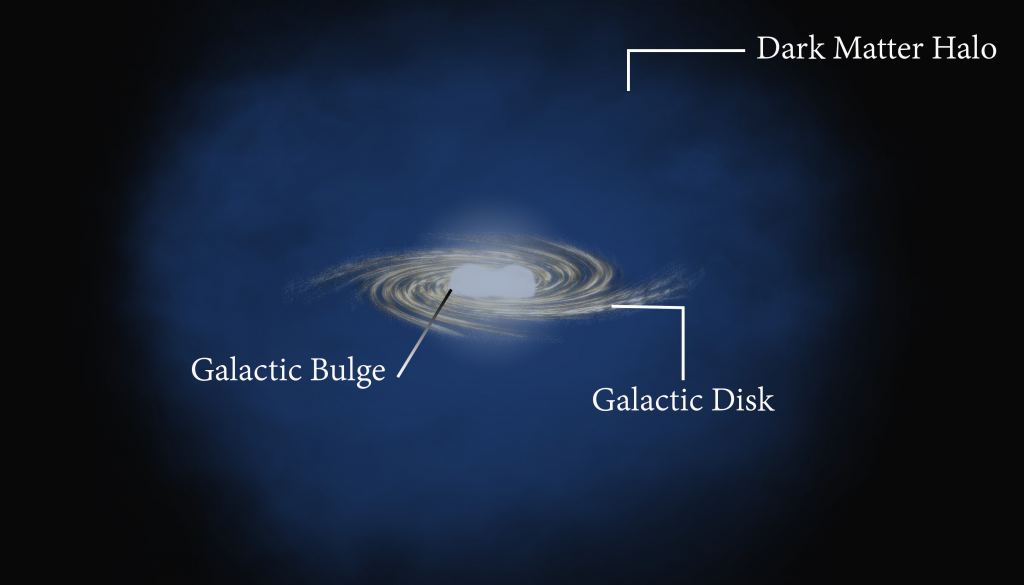Dark matter is notoriously difficult to study. It's essentially invisible to astronomers since it can't be seen directly. So astronomers rely on effects such as the gravitational lensing of light to map its presence in the universe. That method works well for other galaxies, but not so well for our own. To map dark matter in the Milky Way, we rely mostly on the motions of stars in our galaxy. Since dark matter attracts regular matter gravitationally, the method works well for areas of the galaxy where there are stars. Unfortunately, most of the stars lie along the galactic plane, making it difficult to map dark matter above and below that plane. But a recent study proposes a way to map more of our galaxy's dark matter using runaway stars.
Most stars in the Milky Way are gravitationally bound. This means they will spend their entire life in the Milky Way. They can speed around the galaxy, orbiting the galactic center like our Sun, but they don't move fast enough to ever escape from the gravitational pull of the galaxy. But some stars do have enough speed to escape. They are known as runaway stars, or hypervelocity stars. Either through a close encounter with a black hole, or perhaps a supernova, they have gained tremendous speed, and are on their way to leave the Milky Way. Fortunately for this latest study, hypervelocity stars often have a path that takes them away from the galactic plane. So we can study how dark matter affects them to map dark matter in our galaxy.
There is a catch, however. The speed of each hypervelocity star depends mostly on the interaction that gave them a kick. We can't simply look at a star and say the faster it's moving the less dark matter is nearby. Instead, the team looked at the distribution of hypervelocity speeds and directions to give a statistical view of dark matter. So if statistically hypervelocity stars tend to move more slowly in a particular direction, that can tell us about the distribution of dark matter.
Unfortunately, there are only a couple dozen known hypervelocity stars, which isn't enough to make a good dark matter map. So the team created a simulated sample of hypervelocity stars based on whether dark matter surrounds the Milky Way in a sphere, a flattened ellipsoid, and other shapes. They found that the samples we currently have are consistent with a symmetric distribution of dark matter (sphere or ellipsoid) and that the shape could be further pinned down with a sample of only 400 - 800 hypervelocity stars. That's far more than we currently have, but new telescopes and sky surveys should detect those numbers in the future.
Hypervelocity stars aren't the only tool we have to map dark matter in the galaxy, but as this study shows they can be a powerful tool. It gives us further motivation to find and track these speeding stars. They might just have one more lesson to teach us before they leave the Milky Way forever.
Reference: Gallo, Arianna, et al. " Probing the shape of the Milky Way dark matter halo with hypervelocity stars: a new method." *arXiv preprint* arXiv:2111.09657 (2021).
 Universe Today
Universe Today

